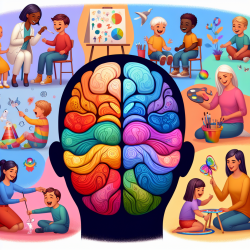Understanding Indicator 7: A Gateway to Preschool Success
In the realm of special education, Indicator 7 plays a pivotal role in shaping the educational journey of preschool children with disabilities. As a Special Education Director, it is crucial to understand and implement the processes associated with Indicator 7 to ensure that federal funding through IDEA is effectively utilized to make a significant difference in the lives of young children and their families.
The Background and History of Indicator 7
Indicator 7 focuses on preschool outcomes, specifically targeting children aged 3 through 5 with Individualized Educational Programs (IEPs). The U.S. Department of Education, through the Office of Special Education Programs (OSEP), allocates over $500 million for preschool special education. The goal is to measure and improve the outcomes for these young learners.
Historically, the Battelle Developmental Inventory-2 was used to assess children upon entry and exit from preschool. However, based on stakeholder feedback, the Child Outcomes Summary (COS) process was introduced in 2019-2020 to a pilot group of districts and is now being rolled out statewide.
What Are Preschool Outcomes?
Preschool outcomes are measured in three key areas:
- Positive social-emotional skills: Including social relationships.
- Acquisition and use of knowledge and skills: Encompassing early language, communication, and early literacy.
- Use of appropriate behaviors to meet their needs: Including self-help and motor skills.
The COS process does not rely on a single assessment instrument but rather synthesizes information from multiple sources to provide a comprehensive picture of a child's functioning across various settings and situations.
The Child Outcomes Summary (COS) Process
The COS process is a team-based approach that involves summarizing a child's functioning in each of the three outcome areas. The process uses a 7-point rating scale and involves the following steps:
- Data collection upon program entry and exit.
- Team discussions to complete the COS Form and assign a rating.
- Entry and exit data entered into the Homeroom Application twice a year.
The COS team consists of family members, teachers, child study team members, and other relevant professionals who discuss and assess the child's functioning to ensure a holistic view of their abilities and progress.
Benefits of the COS Process
The COS process offers numerous benefits, including:
- Comprehensive assessment of a child's skills across multiple settings.
- Facilitated team discussions that provide diverse perspectives.
- Data-driven insights for program improvement and policy formulation.
These benefits ensure that preschool programs are better equipped to support children with disabilities, ultimately enhancing their educational outcomes.
Implementing Indicator 7 in Your District
As a Special Education Director, it is essential to ensure the effective implementation of Indicator 7 in your district. This involves training staff on the COS process, ensuring accurate data entry, and facilitating team discussions to drive meaningful outcomes for preschool children with disabilities.
For more detailed information and resources, please follow this link.










